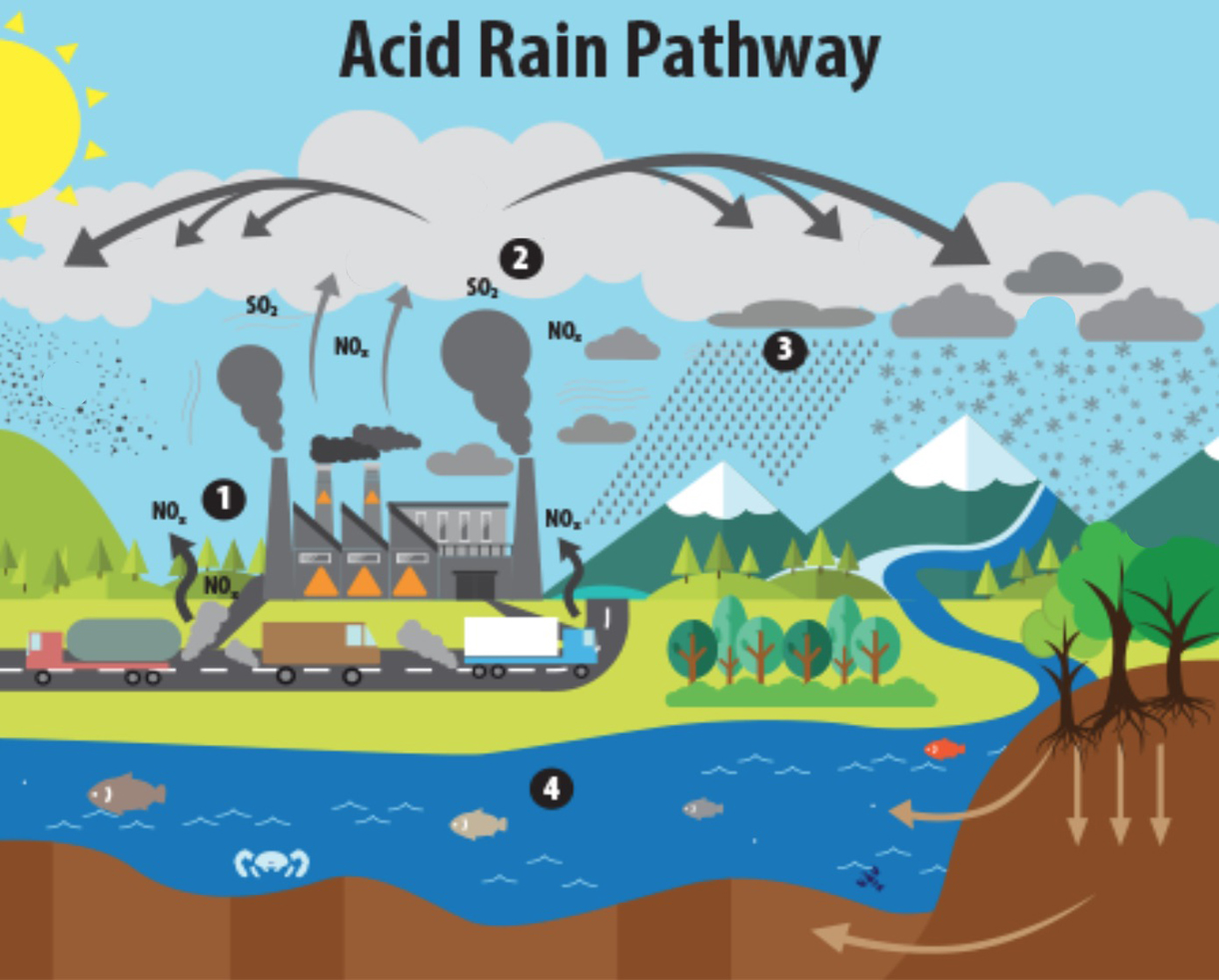Oxides of nitrogen also cause acid rain. In the presence of oxygen and water, nitrogen dioxide is converted to nitric acid. 4 NO2(g) + 2 H2O(l) + O2(g) --> 4 HNO3 (aq)

Oxides of nitrogen also cause acid rain. In the presence of oxygen and water, nitrogen dioxide is converted to nitric acid. 4 NO2(g) + 2 H2O(l) + O2(g) --> 4 HNO3 (aq)
Sulfur dioxide dissolves in water to form sulfurous acid (H2SO3). SO2(g) + H2O(l) --> H2SO3(aq) In the presence of oxygen in the air, sulfurous acid is slowly oxidised to sulfuric acid (H2SO4).
The pH of unpolluted rainwater is usually slightly below 7. This is because carbon dioxide in the air dissolves in rainwater to form carbonoic acid, which is a weak acid. CO2(g) + H2O(l) --> H2CO3(aq) Acid rain has a pH value of 4 or less. It reacts with metals and carbonates like marble and limestone. When this happens, metal bridges and stone buildings are damaged.
Acid rain leeches nutrients from soil and causes plants to wither and die. Acid rain may also react with aluminium hydroxide (Al(OH)3) in the soil to produce Al3+ ions, which are toxic to plants. Acid rain reduces the pH value of natural water bodies like lakes and streams, from between 6.5 and 8.5 to below 4, which is too acidic for fish and other aquatic life to survive.